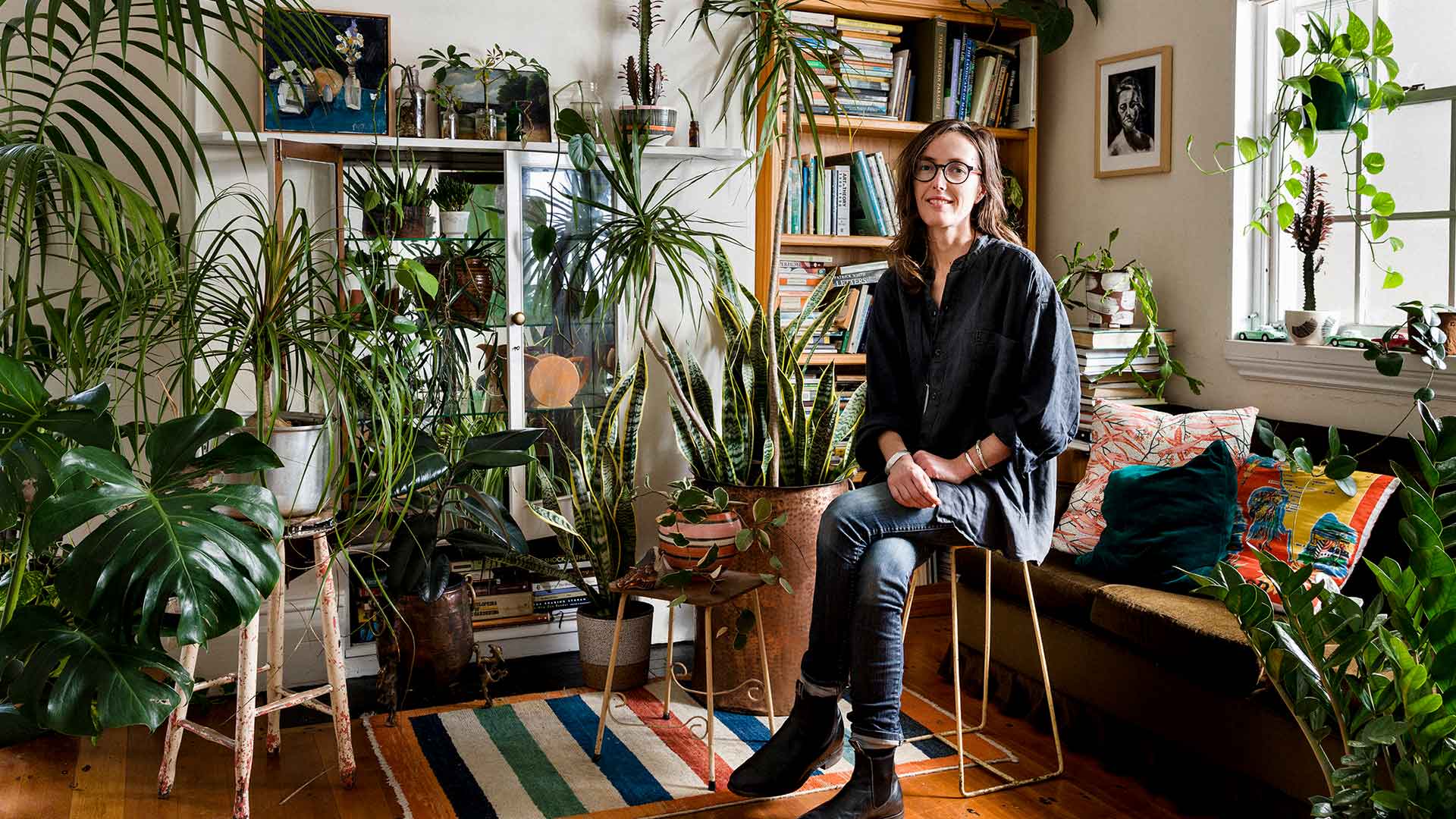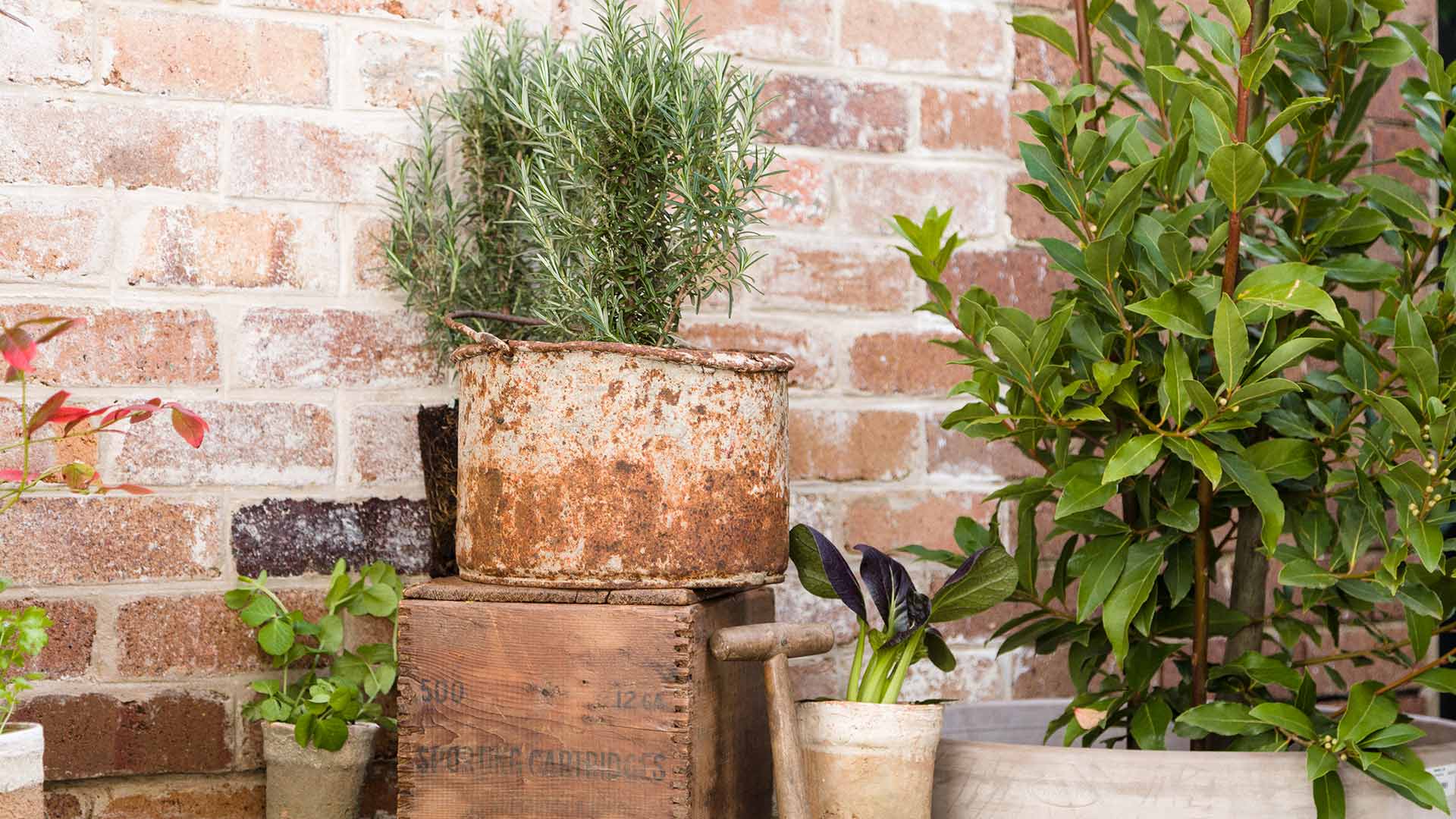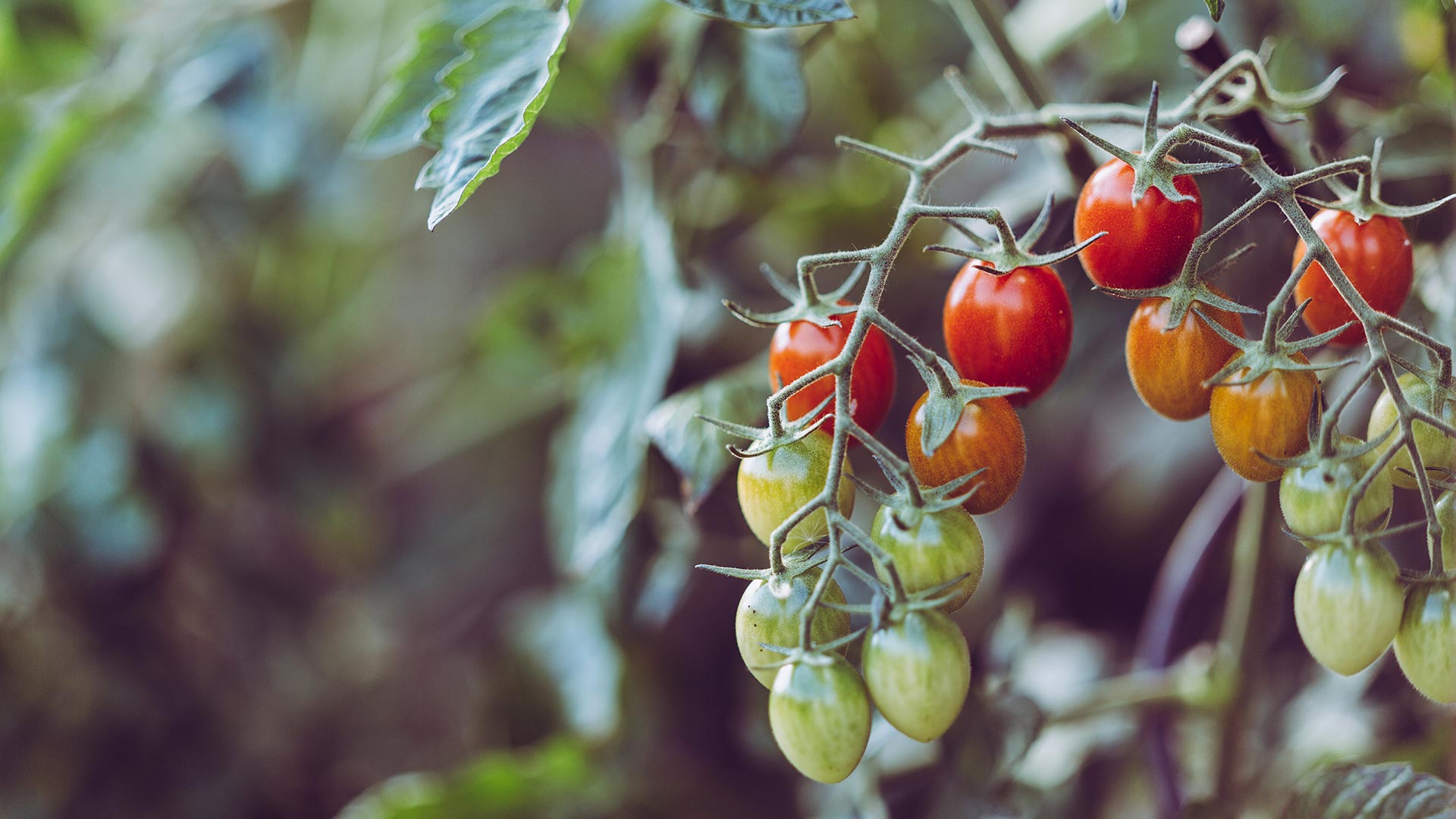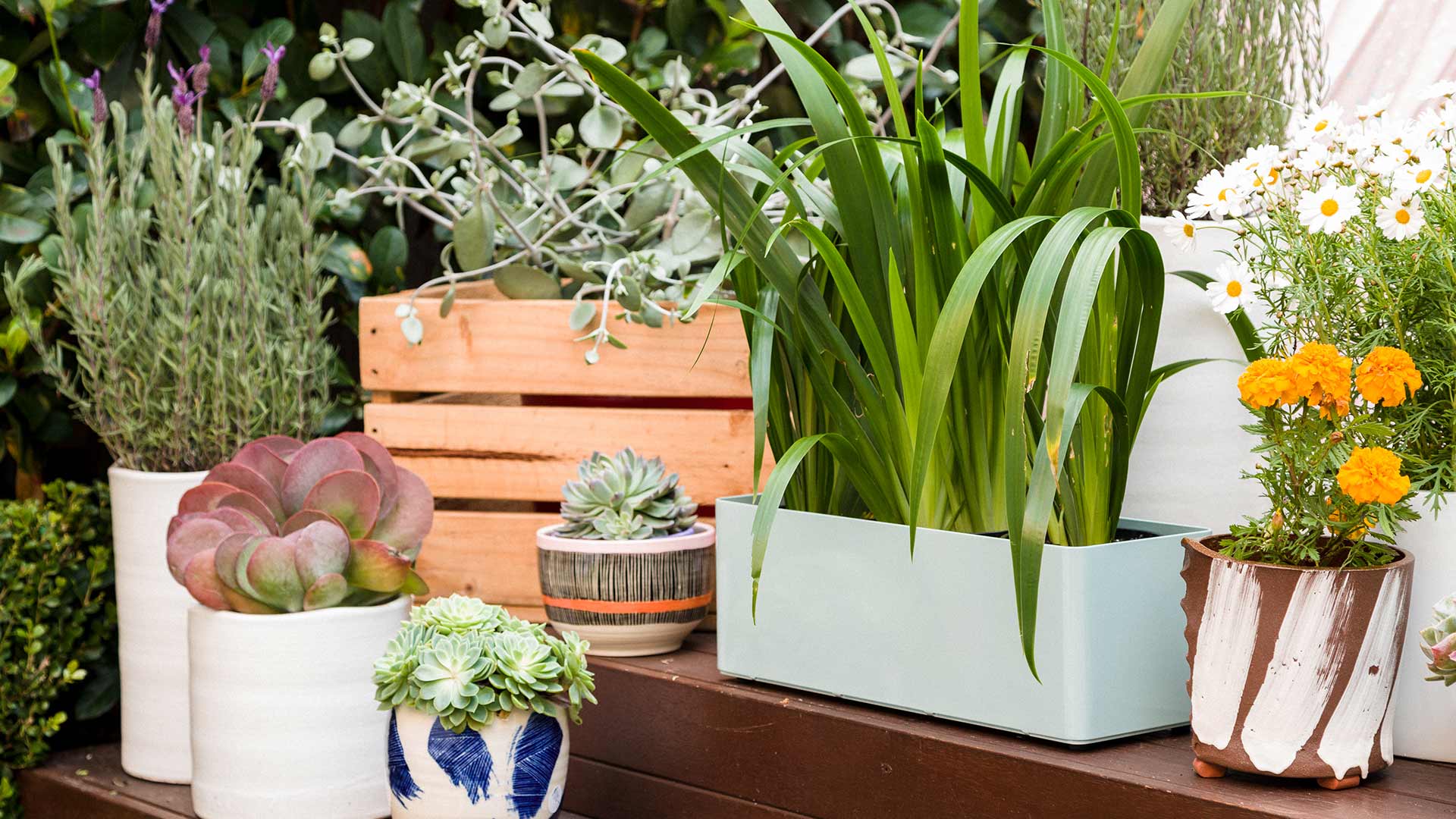How to Take Care of Your Plants at Home So That They'll Take Care of You
Keeping your plants alive, 101.
In partnership with
Unless you have the greenest of thumbs, it's not always easy knowing what to do to keep your plant babies from going to plant heaven. But if you figure out how to do it well, you'll reap the benefits of living in an environment that's good for your health and highly attractive, for that matter.
Founder and editor of The Planthunter, Georgina Reid, spoke to us about the important things to keep in mind when growing plants at home, while Dr Dominque Hes, director of Melbourne's Thrive Research Hub, provided us with her own research on how plants improve our wellbeing.
It's easy to hoard plants, particularly if you're drawn to their natural aesthetic. And according to Hes, science has proven it's beneficial for your health to have heaps, too. "What's important is having a variety of plants of all shapes and sizes, colours and textures. The variety is what gives us the greatest benefits as it most reminds us of nature," says Hes.

Georgina Reid of The Planthunter.
"It's part of a biophilic response left over from a time when humans spent more time outdoors than indoors, surviving based on a relationship with nature. Our brain is more relaxed and able to better deal with day-to-day activities if it feels in control," she says. "Parts of the brain still need to be connected to nature to feel that control. When this bit of the brain is relaxed, research shows that it allows improved concentration, communication, intuition, recollection, learning and creativity," she says.
So, really, stocking up on your favourite plants is a win/win. Your place will look lush and your wellbeing will skyrocket thanks to plants' ability to take up fine dust particles, CO2 and volatile organic compounds (VOCs), which can come from new furniture, paints, carpets and clothes.
Which plants are good for your space? We've taken you through choosing the best plants for your home, now here's how to make sure they (and, in turn, you) stay healthy and happy. Read on to learn how to take care of your favourite plants — and reap the benefits of having these green guys as housemates.

SUCCULENTS
We'll start with the easiest plant type to grow at home: succulents. They often have thick, fleshy leaves for storing water (so they also look kinda quirky) and generally aren't that needy. Because of their ability to store water, succulents aren't the thirstiest of plants. One watering each week is enough — but if the soil or potting mix around the plant is already moist, it won't need any. You can check how damp the soil is by putting your finger a couple of centimetres into the soil (this measurement can be used to test soil or potting mix moisture for other plants, too).
Reid suggests putting them in full light as most succulents prefer outside life. However, if keeping plants outdoors isn't an option at your place, Reid says some succulents like jade plant (crassula spp.) and haworthia (haworthia spp.) will do just fine indoors. Plus, jade plant is a power plant. Hes explains that plants like jade plant with more stomata (like plant pores) are considered 'high removalists' because they're able to remove those fine dust particles, CO2 and VOCs at a much higher rate than other plants, meaning they are good for producing oxygen.

FERNS
Having spent millions of years evolving to survive in perpetually wet, humid environments, ferns are not exactly going to appreciate the drier climates of your house. If you give them a rainforest-like space to grow in they'll absolutely thank you for it. This could look like your bathroom or a shadowy part of the garden.
Most ferns will require more watering than other plant types. And some ferns will need more drenching than others. But they all love nutrient-rich soil and organic liquid fertilizer is recommended for that extra nourishment.
Ferns can be tricky to figure out and can differ a lot from one another, so it's not wise to put down any blanket rules. Reid confesses to having killed a fern or two. "Do your research and talk to specialist fern growers about providing the best situation for your ferny friend," she says. One fern to look for is the hare's foot fern. Also a high removalist like jade plant, hare's foot grows well in sunny environs, all while helping filter the air in your home.

HERBS
These guys love the sun so consider keeping them outside wherever possible. Annual herbs such as parsley, basil and mint can survive with a bit of shade (and plenty of water) but perennials such as rosemary, oregano and thyme come from the Mediterranean and want to soak up the rays — they need direct sunlight to grow.
Perennials are more tolerant of drier conditions than their annual cousins. They thrive in the summer months and will need more watering then. "Water weekly in the warmer months, as this is generally their growing period," says Reid. "And water less so over winter."
In order to keep them alive for as long as possible, pinch the flowers off parsley, basil and coriander. Similarly, try pruning herbs (cutting their tips off) for denser growth — it'll give them a bit more life.

VEGGIES
You don't need a background in agriculture and miles of fertile land to grow beautiful vegetables. All that's required is a planter box and a lot of sun (you'll need to give them at least six hours of sunlight each day). Most vegetables are annuals and will set seed after a year, meaning that they won't be able to produce anything good after this.
The key to mouth-watering produce is rich, moist soil. "You want your soil to be as rich and nutritious as possible, to ensure your crops are juicy and delicious," says Reid. She suggests looking into compost and 'worm wee', both wonderful forms of nutrition. And, make sure that your veggie plants don't stay in soil that's too saturated or has been dried out for too long.
Oh, and it's not just you that likes tasty produce. "Depending on where you live you may need to protect your veggie garden from hungry critters like possums and birds," she says.

CACTI
They're virtually the opposite of a fern and far better at soaking up sun rays than anything else you'll ever grow. If you can help it, avoid keeping them inside. In fact, if you're good at neglecting things, the cactus might be your match.
It's imperative not to water a cactus more than necessary — if in doubt, it's better to hold back. "If they're not undercover, don't be fussed about watering them. Just rely on the rain," says Reid. "Otherwise, water your cactus when you remember — but make sure you don't remember too often."
Now that you can go forth confidently knowing how to take care of your favourite plants, check out our guide to choosing the best plants for your home. And don't forget to add some of those home-enhancing high removalists like jade plant and hare's foot fern, as well as silver queen, pot mum, dragon tree and devil's ivy.
Plant Life Balance is a new initiative designed to get Australians excited and confident about styling their homes with plants while promoting the healthy benefits plants bring. The initiative also delivers an Australian-first, virtual greening app. The Plant Life Balance app, asks Aussies to rate their space, then improve their health score by choosing a look for their room or outdoor area, grabbing a plant list and hitting the nursery. Download the app here.






